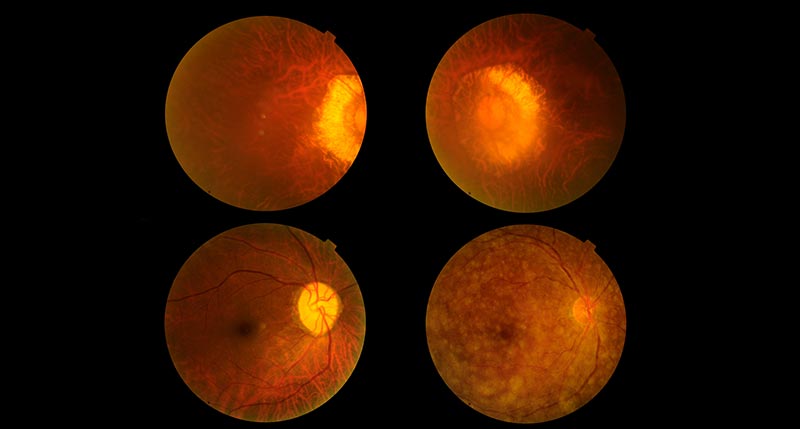Your eyes are your window on the world, empowering you with knowledge, indulging you with beauty, and warning you of danger. Your eyesight is invaluable, which is why, as your eye doctor, we take the responsibility of diagnosing and managing eye diseases that could affect your vision very seriously.
Common eye diseases in the United States include glaucoma, cataracts, age-related macular degeneration, and diabetic retinopathy. These conditions can cause symptoms ranging from mild to severe, but all have one thing in common: The sooner you catch them, the sooner you can start treating them for the best possible outcome.
That’s where diagnostic testing shines; it is the key to early detection. It can give you the rare gift of time: A head-start on treating eye disease successfully.
Diagnosis Focus: Optical Coherence Tomography (OCT)
If you are at high risk or your optometrist suspects you may have early-stage eye disease, he or she may recommend a diagnostic imaging test called Optical Coherence Tomography (OCT).
Good news here: OCT is a non-invasive imaging technique that basically uses light to create cross-sectional images of the back of your eye — where the magic of sight happens.
OCT images allow your eye doctor to see many different parts of the eye in vivid detail. An OCT test maps and measures the thickness and structure of different parts of your eye, including the retina, optic nerve, cornea, and other critical eye structures.
OCT Imaging Can Detect Glaucoma in Early Stages
Your retina is the thin layer of tissue at the back of your eye that captures light and converts it to electrical signals that form images in your brain. Retinal tissue thins and deteriorates as you develop certain eye conditions.
OCT imaging enables your optometrist to measure the thickness of the retinal nerve fiber layer. By knowing its thickness and overall health, your optometrist can tell whether the tissue is in the normal, healthy range or if your eyes have early symptoms of diseases such as glaucoma.
Using OCT imagery, your optometrist can typically identify a problem or condition before symptoms appear. Since glaucoma is known as the Silent Thief of Sight because it rarely has symptoms before vision loss occurs, OCT imaging provides incredibly valuable information. Early detection is the ideal time to start treating any potential eye condition before you even notice a change in your vision.
OCT Imaging Can Detect Macular Degeneration in Early Stages
OCT can also measure the thickness of your macula. The macula is a small area of the retina that provides your sharp, central vision — like you use when reading or watching TV.
Macular thickness correlates directly with your ability to see clearly. If the macula is thinner than normal, deteriorating in areas, or shows yellowish deposits called Drusen, these are all early signs of age-related macular degeneration (AMD).
Once again, early detection is key for the best treatment and outcome for AMD.
OCT Imaging Can Detect Neurodegenerative Disease in Early Stages
The OCT can also provide your optometrist with a good picture of your optic nerve and the thickness of your ganglion cell layer and inner plexiform layers — parts of the retina that interconnect with the optical nerve. The optic nerve is the pathway that takes visual signals provided by the retina and transmits them to the brain to form a visual picture so you can see.
If these nerves are damaged or their layers are thinning, it may indicate early signs of glaucoma, diabetic retinopathy, and even neurodegenerative diseases, including Parkinson’s disease, Alzheimer’s, and Multiple Sclerosis.
How OCT Imaging Benefits Patient Outcomes
If you are a patient with a family history of glaucoma, macular degeneration, or at high risk for diabetic retinopathy or neurodegenerative disease, OCT imaging is of great benefit to you.
By taking OCT images each year at your comprehensive eye exam, your optometrist can track changes in the structures of your eye over time. Each time a new OCT image is taken, your optometrist will compare the new images with your images from previous years. If they notice a change that trends toward an eye condition that could impact your visual system, they will be able to treat it early before you notice any deterioration in your vision.
Is it time for your annual comprehensive eye exam? Call us today to schedule it, and ask us whether OCT imagery may help monitor any eye health conditions that run in your family.

